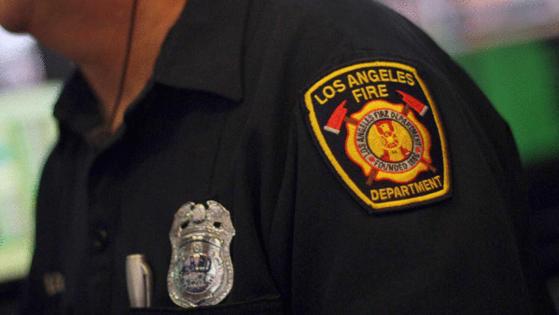Palisades fire victims claim a state park official restricted efforts to fight earlier blaze
Published in News & Features
LOS ANGELES — Lawyers representing victims of the Palisades fire are seeking to depose Los Angeles firefighters to shed light on allegations that a California State Parks official restricted how the Los Angeles Fire Department handled an earlier blaze that reignited into the deadly firestorm that destroyed thousands of homes.
The Fire Department’s handling of the Jan. 1 Lachman fire has come under increasing scrutiny after a federal investigation concluded firefighters failed to put the small brush fire out and it came roaring back to life on Jan. 7, killing 12 people and destroying more than 6,800 structures.
Meanwhile, attorneys working on behalf of Palisades residents have been trying to focus attention on California State Parks’ role in the Palisades fire. In a complaint filed last month, they allege the state agency did not do enough to monitor the Lachman burn scar in Topanga State Park and ensure the area was safe after firefighters said the fire was contained.
Now, the plaintiffs' lawyers are alleging a state park official who arrived at the scene of the fire on Jan. 1 “directly interfered with LAFD’s mop up operations.”
Alexander “Trey” Robertson, one of the attorneys who filed the complaint against the state, told the Los Angeles Times that a fire official up on the Lachman burn scar Jan. 1 alleged that a California State Parks representative told them “they couldn’t bring a bulldozer in to cut a line around the fire and they could not do mop up with their hand tools, dig up around any native plant species.”
“They basically put plants over people and wouldn’t let the firefighters attempt to fully mop up this fire.”
The Fire Department did not respond to questions about whether the state interfered with mop-up operations or otherwise influenced the decision to roll up hoses and leave the scene on Jan. 2. State officials strongly deny they obstructed firefighting efforts.
“The notion that State Parks favors plants over people is ludicrous,” a spokesperson for California State Parks said in a statement. “State Parks never hinders an active firefighting response, and firefighting decisions are up to the responding agency. In this instance, the fire in question was deemed by LAFD to be fully contained a few hours after it was started by an arsonist.”
The attorneys are highlighting information they received from a Palisades fire victim, reality television personality Spencer Pratt, who says a fire battalion chief told him earlier this month that a representative of California State Parks showed firefighters maps of native species and prohibited firefighters from using a bulldozer to cut a line around the fire. Pratt confirmed the claim in an interview with the Times, and the battalion chief did not respond to a request for comment.
Robertson said his legal team also interviewed an L.A. firefighter who was on the burn scar on the morning of Jan. 2, who said a battalion chief told him to roll up hoses and leave. The firefighter said he saw a state park representative on scene, though he did not speak to the person and had no information about whether the person influenced mop-up operations.
There remain many unanswered questions.
Plaintiff attorneys have yet to provide direct evidence that state officials asked the Fire Department to tamp back its firefighting. And while the new allegations against the state are generating political debate on social media as GOP members of Congress scrutinize the state’s role in the Palisades blaze, some question the significance of the new claims. A bulldozer, one fire expert said, would not typically be used for mopping up fires.
“Bulldozers are a great tool for cutting firelines and fire breaks but they are not well suited for mop-up,” said Patrick Butler, a former assistant chief for the L.A. Fire Department who oversaw the wildland tractor unit. “They weigh 30 tons and have up to 18-foot blades and can bury smoldering fuels and expose new fuels, which can create new hazards and place firefighters at risk.”
Experts have said firefighters could have also monitored the burn site for several days after Jan. 1 and pre-deployed firefighters and engines in the area given the extreme weather warnings leading up to Jan. 7, as they had done in the past.
California Gov. Gavin Newsom’s office declined to answer questions about what role the state played at the Lachman burn scar. Instead, it reiterated that the suit was “baseless,” noting that federal authorities charged Jonathan Rinderknecht with intentionally setting the Lachman fire.
Plaintiff attorneys’ legal complaint against California argues the state, which owns Topanga State Park, where the Palisades fire began, did not do enough to monitor the Lachman fire and stop it reigniting. The attorneys do not allege the state was responsible for suppressing the fire; that was the Fire Department’s responsibility. Rather, they argue the state failed to monitor the burn scar and make sure the area was safe.
In a court filing posted last week, attorneys for the state urged the court to dismiss Palisades fire victims’ claims, arguing the complaint “fails to state facts” demonstrating the state was responsible for a “dangerous condition of public property” on Topanga State Park or caused a “public nuisance.” The state also claims that government code and case law make the California Department of Parks and Recreation immune from liability.
In court this week, attorneys for Palisades residents asked a judge to order firefighters and at least one state official to speak on the record about what happened.
Such depositions could shed light on other questions about the Lachman fire.
The Times reported in October that a battalion chief ordered firefighters to pack up their hoses and leave the burn area the day after the Lachman fire, even though they complained that the ground was still smoldering and rocks were hot to the touch. Fire officials also acknowledged to the Times that the department did not use thermal imaging technology to determine whether the earlier Lachman fire was extinguished.
The plaintiff attorneys’ interview with the unidentified LAFD firefighter corroborates Times reporting and raises more questions. According to Robertson, the firefighter said when he hiked to the burn scar on the morning of Jan. 2, he saw no evidence that chainsaws had been used to create a buffer zone around the fire perimeter. He immediately noticed a manzanita tree was still smoking and, when he dug up around the base, he uncovered what he said were “red hot coals.”
Instead of charging the hoses that were already laid out, the firefighter said he was told by his chief to roll up the hoses and pack up.
Pratt, who has railed against L.A. and California officials since he lost his home in the Palisades fire, told the Times he called a battalion fire chief on the evening of Nov. 3 because he felt the battalion chief was being scapegoated for the fire.
Pratt said when he asked the chief if anybody from the state was there, the chief told him a woman from the state came up to him with a map showing him all the areas that were protected that firefighters couldn’t touch. The battalion chief told Pratt that the woman would not let him keep the map and he was taken aback by how much endangered or protected areas they were saying were in this area, Pratt said.
“They told them that he couldn’t bring a dozer up there, which, to me, is truly the biggest takeaway from the whole entire fire: that the state didn’t let them bring a dozer up there,” Pratt told the Times.
Butler disagreed. Incident commanders, he said, usually rely on hand crews and fire engines for mop-up operations.
“I have never used a bulldozer to perform mop-up,” he said. “I request sufficient camp crews and fire engines to make sure a fire is dead out. ... (Dozers are) a great tool and can slow down an advancing fire front, but not in these mop-up scenarios.”
According to Robertson, a California Deputy Attorney General argued in court Monday that the agency doesn’t send a representative out to wildfires on park property. The state attorney also disputed plaintiff attorneys’ claim that California State Parks had anyone at the Lachman Fire telling LAFD they could not use a bulldozer to cut a line around the fire or disturb native plant species, Robertson said.
An LAFD incident log of the Lachman fire indicates California State Parks notified them at 1:46 a.m on Jan. 1 it was “sending a representative.” At 3:19 a.m., it notes the representative had an “ETA 45.”
Michael McNellis, a Palisades resident who lost his home in the Jan. 7 fire, told the Times he and his family hiked up through the Skull Rock Trailhead to the Lachman burn area on New Year’s Day to see how much had burned. McNellis noticed smoke rising from the ground in some areas and started recording videos and taking photos.
One of the photos he took captures firefighters speaking with an unidentified woman that plaintiff attorneys believe works for the state’s Wildfire and Forest Resilience Program. The logo on the woman’s hoodie matches that of the program.
It’s unknown what they were talking about.
“You just assume that the authorities that are in charge of managing a fire like the (Lachman fire) … you assume that they know what they’re doing,” McNellis said. “You’d think they would have taken extra precautions to make sure every hot spot, everything was extinguished there from the previous fire ... Apparently that didn’t happen.”
_____
©2025 Los Angeles Times. Visit at latimes.com. Distributed by Tribune Content Agency, LLC.







Comments